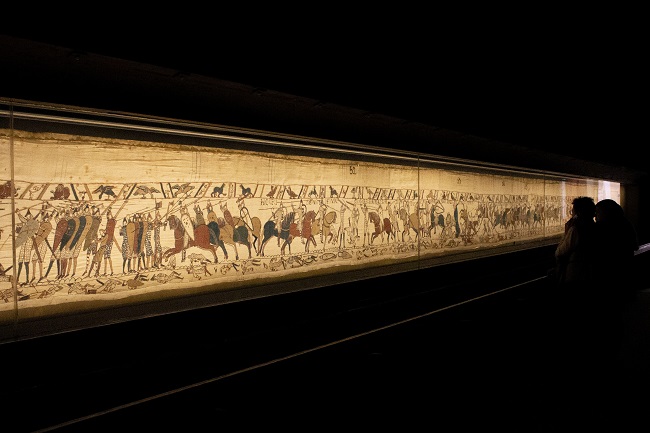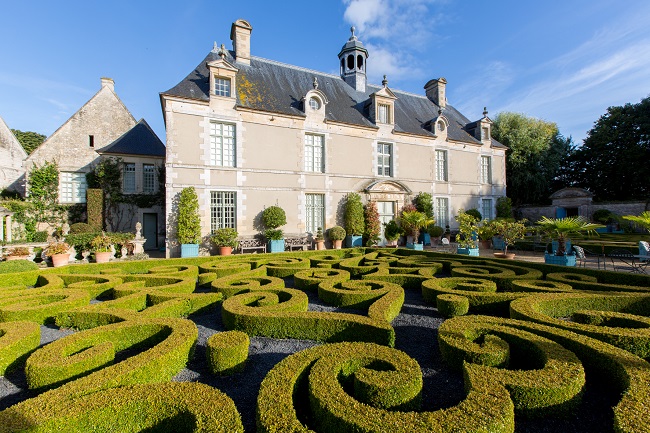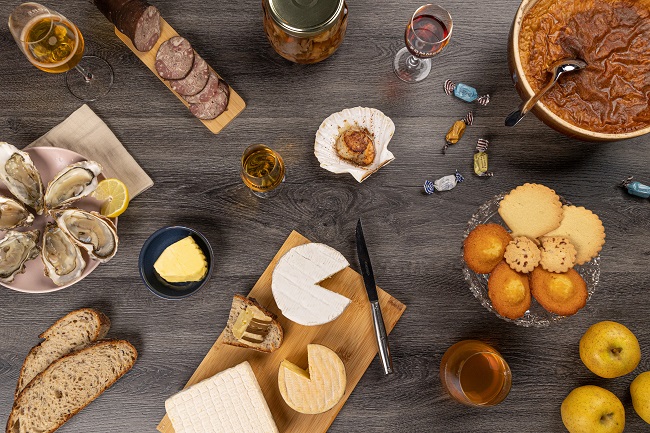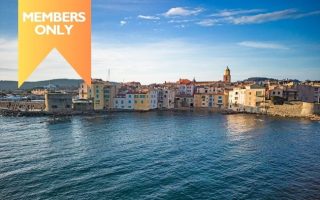10 Reasons to Visit Calvados

Best-known as a tasty drink by the same name, Calvados in Normandy is a destination of choice for travellers seeking to bathe in history and taste delicious food, all against the stunning backdrop of its coastline and orchards. Here are 10 reasons to make the trip to Calvados.
1. Be humbled by the landing beaches
In 1944, thousands of soldiers from the United States, Britain and other nations landed in Calvados to liberate Europe. Among the many monuments paying tribute to them, the new British Memorial at Ver-sur-Mer includes 22,442 names of soldiers, just as the American cemetery lines up 9,387 graves of the missing, facing the sea. Among the must-see museums, the Arromanches Landing Museum was completely redesigned in 2023. It presents the stages of the D-Day landings and details one of the most incredible feats of the war: the construction and installation of artificial ports designed in England to allow rapid supply, in both men and material.

Arromanches and the remnants of the artifical port built for D-Day © Bertl123 / shutterstock
2. 1,000 years of history in Bayeux
A medieval city preserved from the bombings during the war, the small town of Bayeux is home to several treasures not to be missed. Firstly, the Bayeux Tapestry, a famous embroidery of 1,000 years old and 70 meters long, which displays the fantastic epic of William the Conqueror in 58 scenes and 600 characters. Don’t miss also the historic centre of Bayeux: small, cobbled streets, the sumptuous thousand-year-old cathedral, and pretty boutiques to nip into for a little retail therapy.

The impressive Bayeux tapestry © Marie Petit / Calvados Attractivité
3. Falaise and the castle of William the Conqueror
It is in Falaise that you will find the imposing castle where William the Conqueror was born. Cradle of the Anglo-Norman dynasty, this building invites the visitor to go back in time and admire the castle as it existed in the 11th, 12th and 13th centuries using touchscreen tablets. Stading above the surrounding the city, you can better appreciate the historic districts of Falaise, its ramparts and the waterways that run through it.

Château de Falaise © Hellolaroux
4. Honfleur, the postcard of Normandy
“Like no other port”: this is Honfleur, an essential stopover for any visit to Normandy. Its charm is undeniable, with its old port surrounded by narrow, high houses and its Sainte-Catherine church built entirely of wood. Everywhere, art galleries and restaurants welcome onlookers, often in large numbers coming to admire the city which inspired so many impressionist painters and welcomed so many sailors before their next exploration on the seas.

A stroll in Honfleur © Vincent Rustuel / Calvados Attractivité
5. Caen, the Norman capital
Pock-marked by bombings, Caen nonetheless retains impressive historical monuments, such as its two abbeys, built by William the Conqueror and his wife Mathilde of Flanders in the 11th century. The castle, located in the heart of the city, also marks the passage of the Duke of Normandy to Caen. Nearby, the city’s marina borders the peninsula, which welcomes new buildings with very modern architecture. The Norman capital is also a lively city, where the numerous bars and restaurants are a daily showcase of the region’s specialties.

Caen panorama © Photo 911 / Calvados Attractivité
6. The Pays d’Auge and its villages
The Pays d’Auge is often considered the postcard of Normandy. About ten kilometers from the seaside, this is where apple trees and cows are omnipresent, where the country roads are narrow and the terrain is hilly. Everywhere you come across splendid manor houses and pretty villages with traditional half-timbered houses. Don’t miss a visit to the square of Beuvron-en-Auge, labeled Most Beautiful Villages in France, and an apéritif in Beaumont-en-Auge or Cambremer…

The pretty village of Beuvron-en-Auge © milosk50 / shutterstock
7. The scrumptious Cider Route
Among the gourmet specialties to note from the Pays d’Auge, be sure to try the local cider… and calvados, this apple-based spirit which bears the same name as the region where it was born! The Cider Route brings together no less than 18 apple producers on a 44-km route. A unique opportunity to meet the artisans behind the drinks and taste their products. By bike too, loop no. 12 takes you as on a wild and green route among the orchards.

Head to the Norman orchards and explore winding roads lined with apple trees © Vincent Rustuel / Calvados Attractivité
8. Wind down and relax: it’s beach time
From east to west, there is the Côte de Grâce around Honfleur, then the Côte Fleurie with Deauville, Trouville-sur-Mer and Cabourg, the Côte de Nacre and its family seaside resorts, finally the coasts of Bessin marked by the Landing of 1944. A total of 120 km of fine, sandy beaches. From walks along seaside villas to long wilderness areas, everyone can find their own corner of paradise.

Deauville’s colourful parasols © Vincent Rustuel / Calvados Attractivité
9. Remarkable gardens
Another reason to come and discover Calvados: its gardens, nearly ten of which are labelled Remarkable Gardens, a quality reference. Very different in style and spread throughout the territory, they sometimes surround a castle or serve as a perfect detour in search of natural beauty…or a refreshing break.

The beautiful gardens of the château de Brécy © Arnaud Guerin / Calvados Attractivité
10. Live the gourmet life
We haven’t talked about cheese, scallops, oysters… A stay in Calvados is also the guarantee of delighting your taste buds with delicious flavours at gourmet locations : Pont-l’Évêque, Port-en-Bessin, Grandcamp-Maisy…). Visit the producers or book a table at the many restaurants by the sea, in town or in the countryside!

A feast for the senses © Calvados Attractivité
How to get to Calvados?
- By ferry: the shipping company Brittany Ferries provides a connection between Portsmouth and Ouistreham 6 times a day. Other boats connect Poole to Cherbourg daily, and Portsmouth to the town of Le Havre.
- By train: the Eurostar crosses the Channel, linking London to Paris in 2 hours 15 minutes. You need exactly the same time to then connect Paris (Saint-Lazare station) to Caen. Other trains can also take you to Deauville, Trouville-sur-Mer, Cabourg, Lisieux, Bayeux…
- By bike: the London-Paris Green Avenue can take you from London to Newhaven, then to Dieppe by ferry. You can then take the Vélomaritime (Eurovélo 4) to the coast of Calvados!
For more information, visit www.calvados-tourisme.co.uk

View of the coastline from the Mont Canisy © Vincent Rustuel / Calvados Attractivité
Lead photo credit : The beautiful port of Honfleur © Vincent Rustuel / Calvados Attractivité
Share to: Facebook Twitter LinkedIn Email
More in Calvados, coastal towns in France, French coast, Normandy, Normandy beaches, World War II
Leave a reply
Your email address will not be published. Required fields are marked *




REPLY